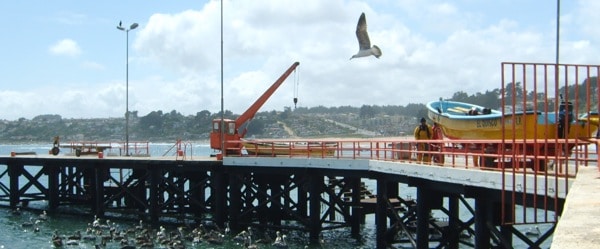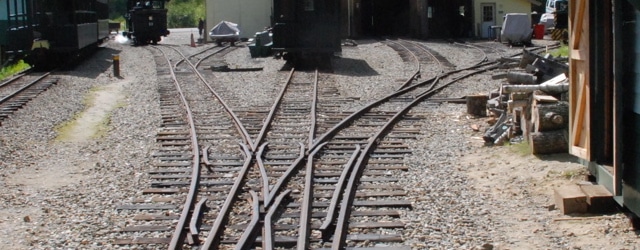Are you wanting to study cell migration and need a way to quantify it? A wound healing assay is one of the earliest and simplest in-vitro assays developed to study cell migration. Collective cell migration is a characteristic behaviour seen in wound repair, cancer invasion, cancer metastasis, immune response, angiogenesis and embryonic morphogenesis. Depending on the cell type, they can migrate as individual cells (e.g. fibroblasts) or collectively as sheets of cells (e.g. epithelial and endothelial cells). Here are some tips to understand if this assay is right for you and how to set it up to get reproducible data.
What Is A Wound Healing Assay All About?
Wound healing assays are based on observing cells migrate into a wound or open space created on a monolayer of cells. The most common information derived from this assay is the rate of gap closure, which is a measure of the speed of the collective motion of cells. In a typical experiment the gap closure rate is measured under different conditions, such as wild-type and mutant cells (knockdown/knockout), or the effect of variable extracellular matrix composition. The assumption is that cells will mimic the in vivo migration behavior. It is one of the simplest methods and requires only common and inexpensive supplies found in most labs that have cell culture capabilities.
The Basic Steps Involve:
- Creating a “wound” on a cell monolayer.
- Capture images at the beginning and regular intervals to monitor cell migration/wound closure.
- And comparison of the images to determine the rate of wound closure.
If you are new to this assay, you will come across different choices at each step of this technique. You just need to choose the most appropriate method for your particular question.
Deciding If Wound Healing Assays Are Right for You
Take into account the following advantages and disadvantages to decide if this method is suitable for you.
Advantages of Wound Healing Assays
Wound healing assays are relatively cheap, simple and can be easily modified to fit different experimental objectives. The wound or gap can be created using a pipette tip or needle, a common inexpensive laboratory tool. This method is appropriate for studies on effects of cell-matrix and cell-cell interactions on migration of population of cells as opposed to other method such as Boyden chamber assays that require suspension of cells that disrupts cell-cell junctions. The flexibility of this assay also allows you to address different experimental objectives. Questions that can be answered by using a wound healing assay include:
- Does migration occur as individual cells or as sheets (therefore maintaining their intracellular junctions?)
- Does knocking down a particular gene affects the rate of migration?
Another major advantage of this technique is that measurements can be made in real-time using live-cell imaging, which allows tracking of tagged intracellular proteins.
Disadvantages of Wound Healing Assays
Like any other assay, wound healing assays come with their own set of limitations:
- It takes a relatively long time to establish and perform this assay. Usually 24-48 hours is needed for cells to form a monolayer and 8-18 hours to close the scratch depending upon the cell type used.
- They require a relatively large amount of chemical reagents (which can be expensive) or cells (which might be difficult). For example, if you are working with a specialized primary cell type that is difficult to obtain in sufficient amount or if you have cells that do not adhere well, this assay might not be the best option.
- Many external factors can influence the outcome of this assay. Therefore, it is important to develop a standard approach for the each cell type. Like any other cell culture experiment, devices, cell passages, and reagents should be kept consistent for reproducibility. Appropriate controls should be recorded in parallel to improve the data quality and accuracy.
- In many cases, wound healing assays do not replace other well-established methods, such as the Boyden chamber assay used for invasion and chemotaxis. For example this assay is not suitable for cells that require a gradient of stimulus for migration.
Cell Preparation for Wound Healing Assay Setup
Now you’ve made the decision to perform a wound healing assay, the first step is to prepare your cells. This assay uses cells derived from cell lines and, in some cases, primary isolates from tissue. To achieve reproducibility of migration phenotype you should always use consistent cell culture conditions.
Choose Your Vessel
Some cells adhere well on plastic (tissue culture dish or multi-well plates), while some cells prefer to grow on glass. Either glass or plastic is suitable for this assay but you should ensure vessel size is sufficient for creating the gap. Multi-well cell culture dishes (6,12 or 24 wells) are a popular choice as they are inexpensive and allow comparing multiple conditions with replicates in one go. You should take into consideration which vessels are compatible with the microscope you plan on using for your experiment. In general, cell culture vessels need to be suitable for live-cell imaging and inverted microscopy.
Density Is Important
One of the first and most important steps in preparing your cells is to optimize the cell seeding density to produce a confluent monolayer of cells. This is an important condition determining the success of the experiment as when cells do not form a perfect monolayer, open spaces are created other than the wound. Cells will most likely migrate in any open area, thereby skewing your results. You can find out useful information on cell number for various sized of culture dishes and plates here.
Happy Cells, Good Results
Once you have achieved the perfect monolayer, you need to determine the frequency and volume of media changes to ensure cells are not stressed. Medium height determines the diffusion of oxygen to the cells. For each culture vessel the usual volumes are published in tables by the vendors. Normally, culture medium should cover the cells by 2 – 5 mm, corresponding to 0.2 – 0.5 ml/cm2 growth area. In general, if the media is phenol red based, check for media color change to know when to replace your media.
Timing Is Important
When comparing between different genotypes (mutants or knockdown cells), the time between reaching confluency and initiation of the assay assays should be consistent, as monolayer behavior may vary as it matures.
Consider a Coating
Cellular migration is a complex process involving dynamic interactions and crosstalk between cells and extracellular matrix, soluble mediators and cytokines. Some cells may require coating of extracellular matrix (ECM) components, such as collagen or fibrinogen, in order to adhere, which also plays an important role in cell migration signaling. Collagen coated culture dishes and multiwall plates are available commercially such as this. In case of fibrinogen, you will need to do the coating at a concentration of 1-5 µg/cm² depending on the cell type. If you are using coated culture vessels, be careful not to damage the coating when creating the gap.
Ensure Migration Not Proliferation
During the course of the assay, cells migrate into the gap, but they will also proliferate/divide and this can skew the results. Therefore, in most wound healing studies, it is preferential to suppress proliferation so that it does not interfere with the measurement of migration. Serum starving is the most common method for minimizing proliferation and is performed by switching to serum free media once the monolayer is formed. However, this is not suitable for all cell types. Primary cells do not tolerate serum starving as well as established cell lines, in which case a lower percentage of serum, rather than total removal, is recommended. This will need to be optimized, start with half of the concentration usually used by the cell type. Drugs such as Mitomycin C or Actinomycin C can also be used to arrest mitosis but the dosage must be carefully controlled to avoid toxic effects that can ultimately alter the migration capability of your cells.
How to Create the Gap
The consistency of gap creation is highly important when conducting a wound healing assay. A cell-free gap is created either by direct manipulation or by physical exclusion. Direct manipulation includes destroying specific regions using mechanical, chemical or electrical means. The most popular way to do a direct manipulation is scratching a confluent monolayer with pipette tip or needle. This is usually called a scratch assay, as scratching the monolayer of cells creates the wound. As the scratch is done manually, it can be difficult to generate reproducible wounds with consistent width. The angle of the pipette and the pressure applied affects the gap created and may result in jagged edge boundaries. If too much pressure is applied when creating the gap, it can also damage the extracellular matrix coating and this will lead to varied migration rates.
Another method is to use inserts to create a gap, often referred to as a gap closure assay. A linear exclusion insert can be obtained from as part of a wound healing assay kit or separately. When placed on the surface of culture vessel, the insert allows cells to be cultured while a consistent gap of a fixed and specified distance (0.5-0.9mm) is maintained. The cells are cultured until they form a monolayer and then the inserts are removed, resulting in a well-defined and uniform gap. Care needs to be taken when removing the insert. Although inserts mean the gap size is more reproducible, cells clinging to the insert can be torn out of the monolayer leaving an uneven edge. It is therefore recommended to rinse with a suitable buffer or media before moving to the imaging setup of the assay in order to wash out any cell debris and, in the case of serum starving, to get rid of remaining serum from the media. Introduction of bacterial contamination is very common during this step, which can lead to cell death over the period of assay. Using sterile forceps and doing the process in the laminar hood can prevent contamination.
Once the gap or wound is created, it is monitored using either regular or time-lapse microscopy until the wound closure is complete. This usually takes 8-24 hours depending on the cell type used.
I hope this has helped you decide whether or not a wound healing assay is right for you and, if so, helped you get started. For information on how to image and analyze your wound healing assays, look out for our upcoming article Also check out our Beginners Guide to Setting Up Migration and Invasion Assays.
References
Jonkman JE, Cathcart JA, Xu F, Bartolini ME, Amon JE, Stevens KM, et al. An introduction to the wound healing assay using live-cell microscopy. Cell Adhes Migr. (2014) 8(5):440–51. doi: 10.4161/cam.36224
Liang CC, Park AY, Guan JL. In vitro scratch assay: a convenient and inexpensive method for analysis of cell migration in vitro. Nat Protoc. (2007) 2(2):329–33. doi: 10.1038/nprot.2007.30
Grada A, Otero-Vinas M, Prieto-Castrillo F, Obagi Z, Falange V. Research techniques made simple: analysis of collective cell migration using the wound healing assay. J. Invest. Dermatol, 137 (2017). 137(2) e11-e16. doi:10.1016/j.jid.2016.11.020







